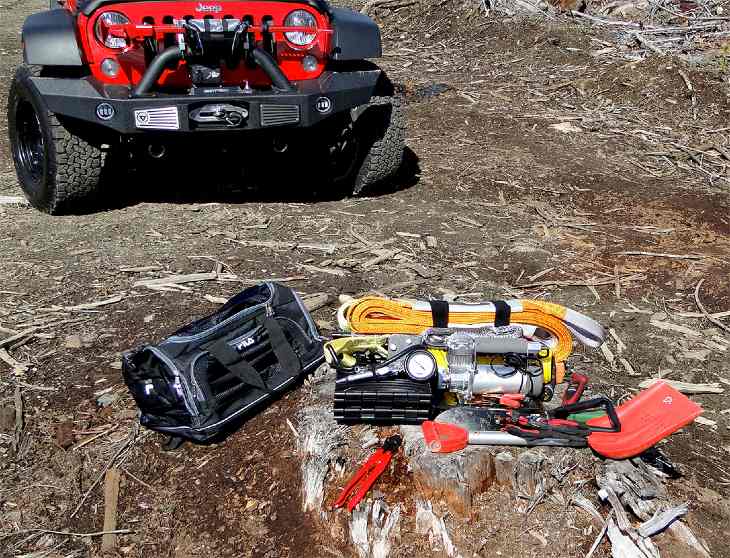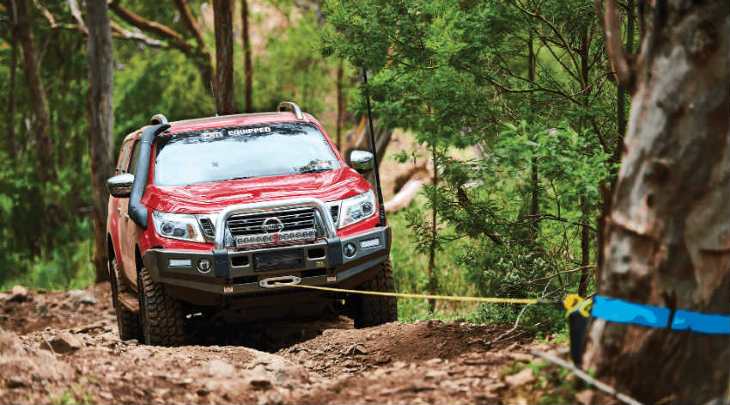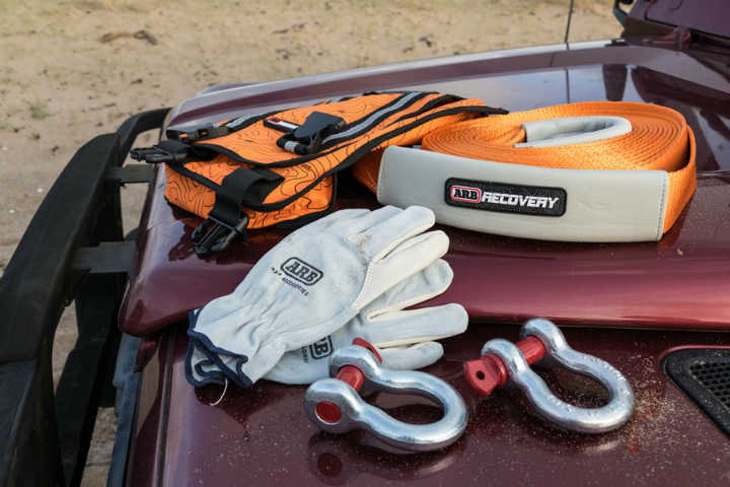It doesn’t matter if you’re already a dedicated off-roader or only now considering jumping into the 4-wheeling fray for the first time; there are two facts that you need to be intimately aware of.
The first fact is that making every effort to learn the lay of the land before you go charging off into it will make your 4×4 experience twice as enjoyable as if you hadn’t. You may be behind the wheel of the most fearsome off-roading vehicle ever assembled, but there’s no substitute for knowing the terrain and being prepared for whatever it’s going to throw at you before you go.
And the second fact is that no matter how well you may have learned the terrain, it’s going to change – and sooner or later, you’re going to get stuck.
Fortunately, getting stuck isn’t a problem – it’s a part of off-roading. Hitting the trail with the right kit to get yourself “unstuck,” however, is essential; so let’s take a look at some of the gear that you – and your vehicle – need to be equipped with should you find yourself axle-deep in a tractionless situation.

source: offroading.com
Being Equipped Means Being Prepared
Let’s face it: there’s some basic emergency gear that every motorist should always have handy – a first aid kit, a fire extinguisher, and a blanket or 2 being among them – but for the off-roader, that list’s just a bit longer. To be properly prepared, you need to have the right off road recovery equipment to ensure you can pull yourself out of the toughest jams.
There are 5 essential bits of kit that you need to consider as absolutely vital for recovery. At the end of the day, all you’re really looking for is that added bit of traction – or leverage – that’s needed to free your vehicle from whatever you’re stuck in, and that’s precisely what these few items are designed for.
Of course, it’d be easy to imagine they’ll all fit conveniently in a bag in the back of your 4×4 – and practically all of it will – but this list of inventory imperatives needs to begin with an item that doesn’t fit in a bag … and if you’re heading off-road, it’s the one item you simply won’t be prepared without it.

source: 4x4offroading.com
A Winch
Make no mistake about it: a winch isn’t a cool option, or a thoughtful suggestion – it’s a mandatory piece of recovery equipment – and it won’t take you very long (especially if you’re new to off-roading) to realize just how valuable it is.
Winches are intended for use in conjunction with your other recovery gear – and they’ll get you unstuck almost as quickly as you got yourself stuck in the first place – but what’s often lost in the discussion is that winches are, at their heart, high horsepower / high torque-producing motors designed specifically to displace heavy loads … and they can be poignantly unforgiving when not used properly.
You getting stuck could pale in comparison to the chain of events that can occur if a winch dislodges the object you’ve connected to … or to the amounts of energy that’ll be released should a winch cord or cable snap due to improper use. In short, always remember to use them in strict accordance with the manufacturer’s recommendations and the seller’s guidance.
Traction Boards
Regarded among off-roaders as the ideal piece of recovery equipment, traction boards are designed to give you back what you lost the moment you got stuck: traction. Formed from polypropylene and moulded with gripping nodules; placing traction boards under either 2 or all 4 of your wheels will very often give you that added bit of momentary, aggressive traction needed to free yourself from mud or sand without resorting to more persuasive, power-induced methods.
Bow Shackles
Bow shackles – commonly referred to as D-rings because of their shape – are one of the items that you can never have enough of … and with good reason too. Used to connect winches to tree protectors, or the recovery cables or chains between vehicles, shackles are commonly rated up to 4.5 tons and provide that solid grip to effectively hold onto a stuck 4×4. You need to keep in mind that shackles (…along with anything they’re attached to) should only be attached to hardpoints on vehicles that are rated as tow or recovery points.

source: offroading.com
Tree Trunk Protectors
When you’re stuck, the urge can easily arise to wrap your winch cord directly around the nearest tree and begin pulling. This, however, is the incorrect thing to do. Winch cords and cables can not only do severe damage to a tree, but the danger from attaching a cable onto itself creates a situation that’s rife for failure. Tree trunk protectors are designed to be wrapped around trees and then attached to winches; ultimately protecting both the tree and potentially you and your 4×4 in the process.
Snatch Straps
It might seem intuitive that a snatch strap can be substituted for a tree protector – or vice versa – but they’re hardly the same. Unlike tree protectors, snatch straps have elastic properties which (like a rubber band) are ideal for drawing a stationary object toward whatever’s doing the pulling. Snatch straps, therefore, are great for connecting a stuck vehicle to one that’s not; but under no circumstance should one be connected to a winch because of the lethal amounts of potential energy that would be released should either the strap or the winch cord snap.
Final Thoughts
As you can see, the list of off-road recovery equipment, in spite of not being very long, is actually quite comprehensive. In fact, with the exception of the winch and the traction boards, it’s possible to purchase straps, shackles and other items in complete kits. So again, remember: getting stuck is pretty much an inevitable part of the off-roading experience. What’s important is being prepared for it before you head off-road; so that when it does happen, you can take command of the situation, come through it safely, and feel really good about yourself afterward.


















